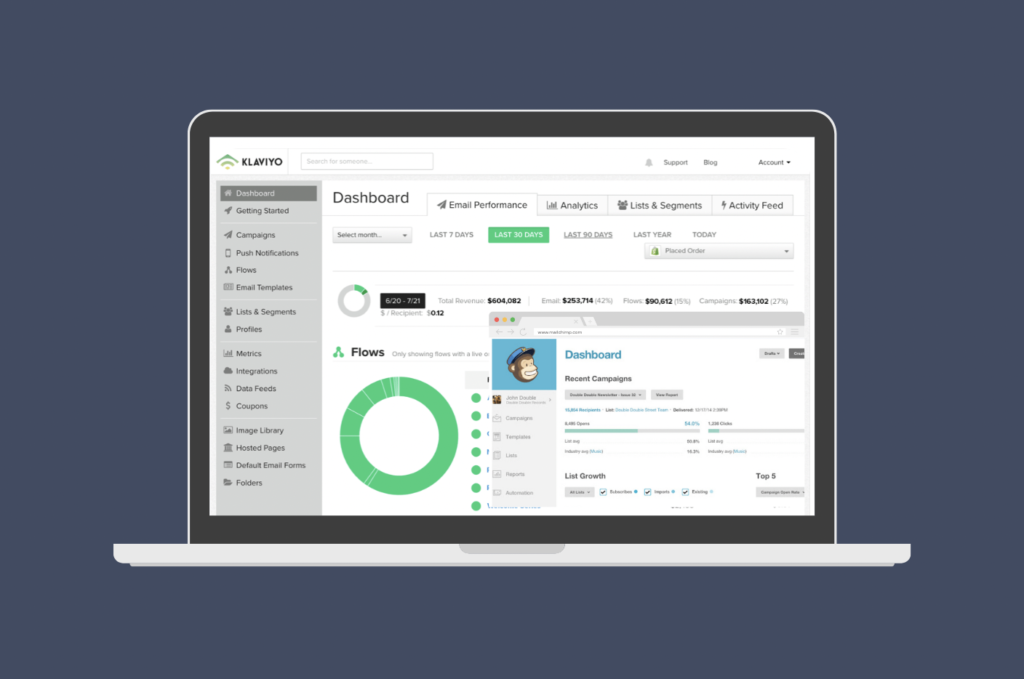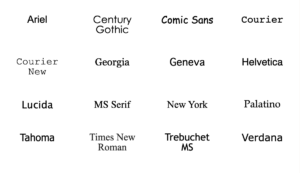Klaviyo and Mailchimp are some of the biggest names when it comes to email marketing platforms, especially for eCommerce businesses on Shopify. Each platform comes with their own benefits and drawbacks, but with over 20,000 businesses moving over from Mailchimp to Klaviyo, it does beg the question, what does Klaviyo have that Mailchimp doesn’t?
As experts in email marketing we are here to help answer the Klaviyo vs Mailchimp questions and having used both platforms extensively, we can give you a first-hand account of our experiences with each platform.
Here are six reasons to make the move from Mailchimp to Klaviyo.
1. Segmentation
There is a famous saying- in the world of marketing at least- that brands simply can’t afford to send every email to everyone. Klaviyo clearly heard this and ran with it, because they have taken segmentation to the next level-allowing you to segment based not only on customer data and events but also using data science and predictive analytics such as when a customer is likely to repurchase to target customers effectively. This can be particularly effective when you are warming up mailing lists and sending to the most engaged subscribers, or on the other end of the spectrum, trying to entice your customer to purchase again.
MailChimp in comparison has a much more basic approach, giving you the option to create ‘Groups’ and ‘Segments’. These segments are more akin to your rudimentary lists such as “New Subscribers,” or “Recent purchases.” Groups are a little better, allowing you to target customers based on behaviours like, “purchased in the last 30 days.”
2. Automations
Automations are a great way of generating revenue for your business as you sleep! Once an automation, or ‘Flow’ as Klaviyo have called them, has been set up, they automatically run 24/7 . So, what does Klaviyo have to offer? Well, Klaviyo has a whole library worth of options to choose from when it comes to automations. From the simple abandoned cart and welcome series, to the more advanced VIP Loyalty series, and if there isn’t an automation for you, you can always build one from scratch. The possibilities are endless!
Mailchimp’s automation offering has been improved in the past few years from very basic to the new ‘journeys’ which is better. Rather than the previous pre-set options the new journey capabilities mean you now can split test flows and add different times details, and it’s super simple to get these set up and running, however, the options for customisation and specific customer targeting is limited when you compare it to the robustness of Klayiyo’s automation.
3.The Design Builder
Now, this one is a little subjective. As a professional marketer, Klaviyo’s builder is infinitely better, allowing for complete control of the design process and what can often feel like, endless possibilities for customisation. Klaviyo recently launched a new design builder where universal elements such as the header and footer can be created once and then any changes at a later stage can be quickly changed across all email templates rather than manually changing each email.
Mailchimp on the other hand is much more basic and can feel quite limiting to professionals. Now, this being said, a more basic builder may be exactly what you need if you are a new business with little experience using anything like this before. It is easy to use, straightforward, but basic.
4.Integrations
With 300+ pre-built integrations, Klaviyo really is the dream platform when it comes to your marketing ecosystem. The ease of integration is market leading, effortlessly working with the likes of Shopify, Meta, Google Ads, and Gorgias to name a few. Some of the key benefits of these easy integrations is that you can use Klaviyo segments in audience targeting for advertising or automatically collect data whilst interacting with your customers on another platform. Klaviyo also gives you the opportunity to use their API kits for integrations and even suggest a new collaboration if you don’t see what you need.
MailChimp on the other hand is lagging behind. After parting ways with Shopify in 2019 the current integration is with a third party app meaning that you simply won’t be able to achieve the same level of data and connectivity between Mailchimp and Shopify. It does allow integrations with Meta and Google but the limited options with segmentation don’t allow for the full benefits you can achieve with Klaviyo.
5.Sign up Forms
One way to think about sign up forms is the gateway to your content. It is your first opportunity to interact with potential subscribers and tell them why they should subscribe, whether it be exclusive offers, what kind of content they will be receiving, or how it will look. It is important that you make a great first impression, designing your sign up forms to optimise conversions.
Both Klaviyo and Mailchimp allow you to personalise sign-up forms with an easy to use drag and drop builder, but once again, Klaviyo outperforms Mailchimp, with its easy to use functionality, where you can effortlessly embed forms without the arduous task of having to make changes to the code, as you do with Mailchimp.
The biggest difference between the two email platforms is how Klaviyo allows you to create multiple signup forms for one list, meaning that you can create as many forms as you want, tailoring them to specific traits, may it be based on location, device and customer behaviour.
Mailchimp sign-up forms, conversely, are based on lists. So, if you want to create a new form, you need to create a new list, meaning that everyone sees the same sign-up form which may not be optimised for potential users.
6. Reporting
Data and reporting underpin all of your marketing efforts, justifying your decisions and guiding future strategy. So, how do Klaviyo and Mailchimp compare?
The usability of Klaviyo’s reporting makes analysing the data a delight, within a couple of clicks of a few buttons, you have a report automatically created focussing on Klaviyo gives an overview, focussing on several metrics that allow you to judge how well your email marketing is performing and where requires further improvement.
Some of these data points include:
- Your bounce rate
- Your click-through rate
- Dropped emails
- Emails marked as spam
- Your open rate
- Emails received
- Unsubscribed emails
Mailchimp in comparison is a lot simpler, looking at a more basic baselines, which you can see from your campaign page. There is the option to look a little further and compare how emails are doing against each other, but this is really as advanced as reporting goes with Mailchimp and there is limited options on the timeframe available to report.
If you are a new business, just starting out and don’t have much experience handling large amounts of data, this could work for you, however, if you want to truly understand and analyse your email marketing efforts, then Klaviyo is the obvious choice.
Final Thoughts
If you would like more information on Klaviyo or would like to make the transition from Mailchimp to Klaviyo then contact us and book a discovery call to find out more.
Klaviyo offers advanced features like predictive analytics, detailed segmentation, and a seamless Shopify integration, making it ideal for e-commerce brands aiming to deliver personalised, data-driven marketing. Mailchimp’s tools are more basic and may limit your growth as your business scales.
Migrating from Mailchimp to Klaviyo is straightforward with the help of Klaviyo’s migration tools and guides. You can import contacts, email templates, and even historical data with ease. Contact us for expert support to ensure a seamless transition.
No, you won’t lose your data. Both your subscriber lists and email templates can be exported from Mailchimp and imported into Klaviyo. However, we suggest redesigning templates to optimise them for Klaviyo’s builder and additional features.
Klaviyo’s pricing is generally higher than Mailchimp’s because it offers more advanced features, particularly for e-commerce businesses. While Mailchimp is cost-effective for small startups, Klaviyo’s tools can generate a higher ROI for scaling brands with its data-driven approach.
We feel that any additional cost with Klaviyo is quickly returned due to the features available and the ROI is positive.
Yes, Klaviyo is known for its seamless Shopify integration, enabling detailed customer data syncing and advanced segmentation. It also integrates with other platforms like META, Google Ads, Pinterest so you can easily use customer data for your marketing.
Klaviyo enhances email marketing through detailed reporting, dynamic content, automation flows, and predictive analytics. These features help you target the right customers with tailored content, leading to higher engagement, improved conversion rates, and more revenue.












